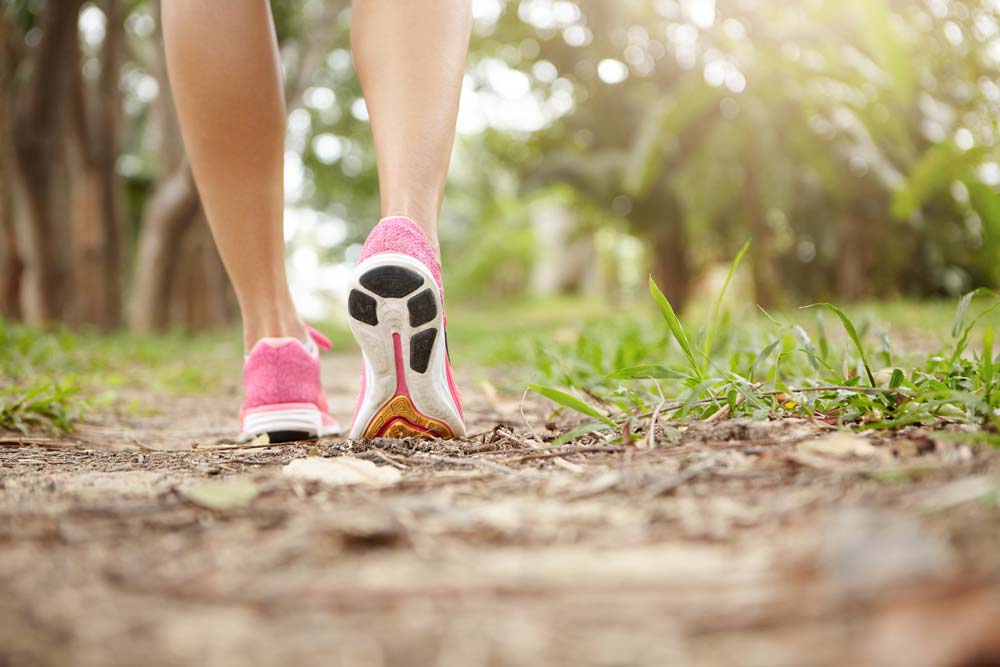Nowadays, people walk in different ways. For instance, humans walk, run, and jog depending on the situation. To begin with, what are the differences in the definitions of walking and running? Walking refers to a way of moving where one foot is always on the ground. On the other hand, running means a method of movement in which there is a moment when both feet leave the ground at the same time, float, or jump.
Then, is there a difference between running and jogging, both of which are moving in the same way? Jogging is running at a speed at which a person can walk or run while talking slowly and effortlessly, like running at a fast pace, to improve your health and get used to the preparatory exercises. Running is a way of running at or below the breath, and is intended for competitive sports and hobbies while aiming for faster and longer distances.
The importance of upright walking
Isao Sarashina describes the advantages of upright bipedal walking as follows:
- Less area is exposed to sunlight.
- The head is off the ground, making it cooler.
- It allows for farther vision.
- The large brain can be supported from below.
- It promotes energy efficiency.
- Both hands are free to use weapons and carry food. (Sarashina, 2019)
What is more, Russell Howard Tuttle states that bipedal foragers evolved to have strong heels and be able to walk long distances because they may have squatted frequently while consuming their harvest (human evolution | History, Stages, Timeline, Tree, Chart, & Facts, 2021). This is because our ancestors lived in the trees and had to hunt extensively to survive on the ground. On the other hand, they were significantly slower at running than quadrupeds, such as lions and cheetahs.
The difference in walking style between men and women
The walking style also affects the whole body. Men tend to take larger strides and walk with their feet further apart. This inclination allows for more movement from side to side. As a result, men tend to move their arms and shoulders more than women when they walk. On the other hand, women tend to shorten their stride and keep their feet closer together. This inclination results in less left to right movement and more up and down movement.
What is a good posture and gait?

According to the research of Statista, it is obvious that the number of remote work is going up between 2019 and 2020 due to the coronavirus (Remote work frequency before/after COVID-19 2020 | Statista, 2021). People who are exposed to coronaviruses cannot exercise much and are concerned about health risks.
A healthy and clean posture and walking style is the next step.
- Stand up straight without bending over or arching your back.
- Avoid leaning back and forth, as this will strain the muscles in your back when you walk.
- Try to walk looking forward, not down.
- Keep your chin parallel to the ground to reduce the strain on your neck and back.
- Relax your shoulders to reduce shoulder tension and make it easier to move your arms up and down.
- Focus on your core muscles, like focusing on your stomach, as this will help you walk more gracefully.
- Keep the pelvis centered to prevent bending of the back.
Accordingly, maintaining a good walking pattern can improve your mood, help you breathe easier, and reduce the risk of falling because it strengthens your legs and feet.
Conclusion
As humans evolved to walk on two legs, we were able to use our hands more freely and walk long distances.
In the past two years or so, the coronavirus has spread and our lifestyle is changing rapidly. Now that people are feeling the pain in their human neck and back, it is time to rethink their walking style.
Although there are differences in the way men and women walk, they can share the fun and fatigue because they are walking at a pace that matches each other. Also, by making correct posture a habit, you can improve your mental and physical health.
Reference
- Encyclopedia Britannica. 2021. human evolution | History, Stages, Timeline, Tree, Chart, & Facts. [online] Available at: <https://www.britannica.com/science/human-evolution> [Accessed 16 October 2021].
- Sarashina, I., 2019. Wakai dokusha ni okuru utsukushii seibutsugaku kōgi. Tōkyō: Daiyamondosha.
- Statista. 2021. Remote work frequency before/after COVID-19 2020 | Statista. [online] Available at: <https://www.statista.com/statistics/1122987/change-in-remote-work-trends-after-covid-in-usa/> [Accessed 17 October 2021].
